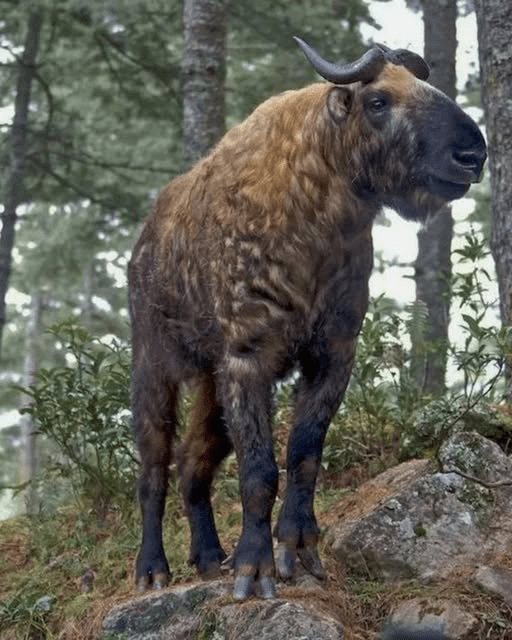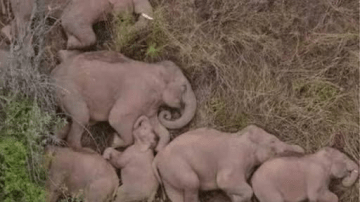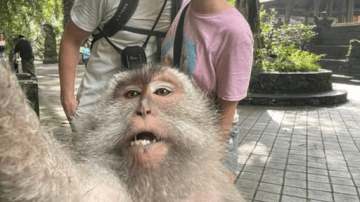Deep within the icy folds of the eastern Himalayas, where clouds wrap around snow-dusted peaks and the air grows thin at 4,000 meters above sea level, an ancient creature roams quietly through the mist. Massive, shaggy, and strangely majestic, the Takin is one of the world’s rarest and least understood mammals—a true guardian of the high mountains.

To the untrained eye, a Takin might look like an odd mix of animals—a goat’s face, a cow’s body, and the stocky legs of a musk ox. But this mysterious herbivore is unlike anything else on Earth. Its golden coat gleams in the sunlight, and its powerful frame moves with quiet grace across terrain that would challenge even the most skilled mountaineer.
A Rare Mountain Monarch
The Takin is not just rare—it’s elusive. Found only in the rugged ranges of Bhutan, Tibet, northeastern India, and China’s Sichuan province, this remarkable mammal has learned to thrive where few species dare to live. High above 13,000 feet, where oxygen thins and temperatures plummet below freezing, the Takin survives in herds that move like living shadows along the cliffs.
Adult Takins can weigh more than 200 kilograms (441 pounds), standing over a meter tall at the shoulder. Despite their bulk, they are surprisingly agile, capable of scaling near-vertical slopes in search of fresh vegetation. Their thick, short necks and muscular legs give them balance and stability on rocky ground, while their hooves, rough and ridged underneath, grip even the slickest mountain stone.
They are built for survival in a world of extremes.
The Secret of the Golden Coat
What truly sets the Takin apart is its golden, oily fur—a built-in suit of armor against the Himalayan cold. The coat, which can shimmer in hues of bronze, gold, or pale yellow, is thick and woolly, protecting the animal from freezing winds. Beneath it lies a layer of dense fat that stores heat and energy, keeping the body insulated through long, snowbound winters.
But the most fascinating part of this adaptation lies in the oil that seeps naturally from its skin. This waxy secretion makes the fur waterproof, allowing snow and rain to slide right off. It also helps mask the Takin’s scent from predators like leopards and wolves.
Scientists have called this oil the Takin’s “secret survival weapon,” a feature that gives it an edge in some of the harshest conditions on the planet.
| Takin Adaptation | Function | Survival Advantage |
|---|---|---|
| Oily, waterproof fur | Keeps the animal dry and warm | Prevents hypothermia in cold weather |
| Short, muscular legs | Stability on rocky slopes | Enables climbing steep mountains |
| Large nasal cavity | Warms cold air before breathing | Protects lungs from frost |
| Group behavior | Shared heat and protection | Increases survival in blizzards |
Life Above the Clouds
Takins are social creatures. They live in small family groups throughout most of the year but can gather into herds of up to one hundred during the summer months when food is abundant. Their calls echo through the valleys—low, guttural sounds that signal movement or danger.
Their diet is simple but essential for survival. They graze on bamboo shoots, alpine grasses, and leaves of rhododendrons and willows. During warmer months, they wander through meadows and forests, feeding from dawn until dusk. When winter arrives, the herds climb to higher altitudes, avoiding deep snow and predators.
Because their ecosystem offers limited vegetation, Takins are opportunistic feeders. They can stand on their hind legs to reach higher branches, much like goats. They even lick salt from mineral-rich rocks to supplement their diet—an important source of nutrients in their barren world.
Every movement of the herd is a balance between hunger and safety. The Himalayas are beautiful but unforgiving, and the Takin’s survival depends on constant adaptation.
The Mystery of Its Origins
Few animals have inspired as much curiosity as the Takin. Early explorers, unsure how to classify it, described it as a “golden goat,” a “mountain ox,” or even a “living relic.” For centuries, scientists debated where it fit on the evolutionary tree. Was it a giant goat? A primitive bison? A hybrid of both?
Modern research has revealed that the Takin belongs to the bovid family, sharing distant ancestry with goats, antelopes, and musk oxen. However, its unique appearance and adaptations make it one of the most distinctive mammals on Earth.
Some naturalists even believe the Takin inspired the legend of the golden fleece, while others claim it influenced ancient myths of unicorn-like creatures. Watching one emerge from the mist, its golden coat gleaming against gray rock, it’s easy to see how myth and reality might have merged.
A Sacred Symbol of the Himalayas
In Bhutan, the Takin holds a sacred place in both culture and spirituality. It is the national animal, a living embodiment of balance between strength and peace.
According to local legend, a 15th-century Tibetan saint known as Drukpa Kunley, often called “The Divine Madman,” performed a miracle that gave birth to the first Takin. After finishing a hearty meal of beef and mutton, he joined a goat’s head to a cow’s body and commanded it to rise. To everyone’s astonishment, the strange creature stood—and walked.
Since then, the Takin has been revered as a symbol of divine creation and harmony between the spiritual and natural worlds.
Visitors to Bhutan can see these gentle giants at the Motithang Takin Preserve, where a protected herd roams freely through the pine forests near the capital, Thimphu. For many, seeing a Takin in person is a moment of wonder—proof that myths sometimes walk among us.
Facing the Future
Despite their mythical charm, Takins are facing very real challenges. Habitat loss, poaching, and climate change threaten their survival across much of their range. Deforestation is pushing them higher into the mountains, where food is scarce and conditions even more extreme.
Their slow reproductive rate adds to the danger. Females give birth to only one calf per year, usually in the spring. The young are born strong, able to stand within hours, but their survival depends entirely on the protection of the herd.
Conservation groups in Bhutan, China, and India are working tirelessly to safeguard the Takin’s future. Sanctuaries and wildlife corridors are being established to connect fragmented populations, while anti-poaching patrols help protect these rare creatures from illegal hunting.
| Country | Conservation Status | Primary Threats | Protection Efforts |
|---|---|---|---|
| Bhutan | Stable | Habitat loss | National protection, cultural reverence |
| China | Vulnerable | Poaching, fragmentation | Nature reserves and breeding programs |
| India | Near Threatened | Deforestation | Protected areas in Arunachal Pradesh |
The efforts are working—but slowly. In some regions, Takin populations are showing signs of recovery. Still, their future depends on preserving the fragile ecosystems of the Himalayas that have sustained them for millennia.
The Spirit of the Mountains
To see a Takin in the wild is to witness a moment of serenity few ever experience. In the cold dawn light, a herd may appear through the fog—golden backs glinting, breaths clouding the air, their heavy steps muffled by the snow. They move together, calm but watchful, perfectly at home in a place where few creatures can survive.
There’s an ancient dignity in the way they carry themselves, as though they know they are the guardians of something sacred. Each movement, each call across the valleys, seems to echo the heartbeat of the Himalayas itself.
For the people who share their mountains, the Takin is more than an animal—it’s a reminder of resilience, of quiet strength, of balance between earth and spirit.
Final Thought
In a world racing toward modernization, the Takin stands as a powerful reminder of what endures. It is both a survivor of the ancient world and a symbol of harmony between nature and humanity.
Massive yet gentle, rare yet enduring, the Takin’s story is one of mystery and strength—a living legend of the high Himalayas. As the sun rises over the mountain peaks, casting light across their golden coats, these extraordinary creatures continue their timeless journey—an echo of the wild heart of Asia.
This article celebrates the Takin as a rare and majestic symbol of the Himalayas—an enduring testament to nature’s resilience, mystery, and quiet beauty that continues to inspire awe across generations.





